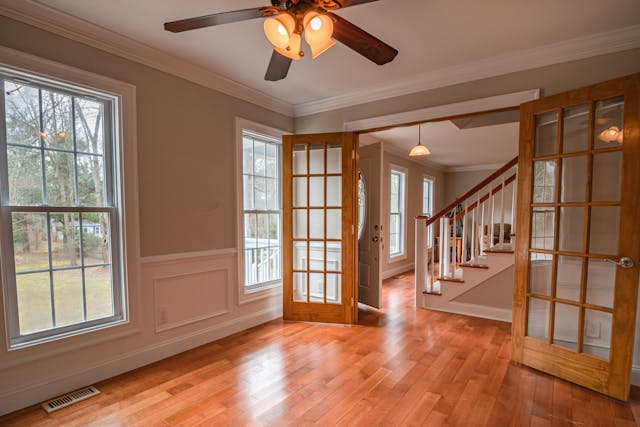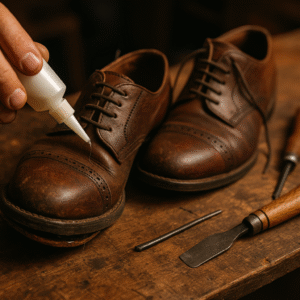Wooden floors bring timeless beauty and warmth to any space, but over time, they can develop grooves and gaps that detract from their appearance. Learning how to fill groove on a wooden floor is an essential skill for maintaining its integrity and aesthetics. These grooves not only affect the look of your floor but also create spaces where dirt and debris can accumulate, making maintenance more difficult.
This comprehensive guide will walk you through the process of repairing these imperfections. By understanding the causes of grooves, choosing the right materials, and following proven techniques, you’ll be able to fill groove on a wooden floor effectively and restore its flawless finish.
Understanding Why Grooves Form in Wooden Floors
Before tackling the repair process, it’s important to know why grooves form in the first place. This knowledge helps you address the root cause and prevent future issues.
Common Causes of Floor Grooves
- Moisture Fluctuations: Changes in humidity cause wood to expand and contract, leading to gaps.
- Natural Aging: Over time, wooden floors may dry out, creating grooves between planks.
- Improper Installation: Incorrect spacing during installation can result in uneven floors with visible grooves.
- Daily Wear and Tear: Heavy foot traffic and furniture movement can create small cracks or widen existing grooves.
By identifying the cause, you can choose the best method to fill a groove on a wooden floor and prevent recurrence.
Selecting the Right Materials to Fill Groove on a Wooden Floor
Choosing the correct filler material is critical for a seamless repair. The right option depends on the size of the groove and the type of finish on your floor.
Popular Materials for Filling Grooves
- Wood Filler: Perfect for small to medium grooves, offering a smooth and durable finish.
- Flexible Caulk: Ideal for larger gaps as it adjusts to the natural movement of the wood.
- DIY Sawdust Mixture: A budget-friendly option that blends perfectly with your existing flooring.
Using the appropriate material ensures a strong, visually pleasing result when you fill groove on a wooden floor.
Preparing the Wooden Floor for Repair
Proper preparation is essential for a successful repair. Skipping this step can result in poor adhesion and a visible repair line.
Steps to Prepare Your Floor
- Clean the Groove: Remove dirt, dust, and debris from the groove using a vacuum or soft brush.
- Sand the Edges: Lightly sand around the groove to ensure the filler bonds effectively.
- Wipe the Surface: Use a damp cloth to remove any remaining dust and let it dry completely.
Thorough preparation makes it easier to fill groove on a wooden floor with long-lasting results.
How to Use Wood Filler to Fill a Groove on a Wooden Floor
Wood filler is one of the most reliable and straightforward options for repairing grooves.
Step-by-Step Process
- Apply the wood filler into the groove using a putty knife.
- Press the filler firmly to ensure it fills the entire gap.
- Smooth the surface with the knife for a level finish.
- Let the filler dry completely before sanding and refinishing.
Wood filler is an excellent solution for minor grooves, restoring your floor’s seamless appearance.
Filling Grooves with a DIY Sawdust and Glue Mixture
For a natural-looking repair, a mixture of sawdust and glue can be used to fill groove on a wooden floor.
How to Create and Apply the Mixture
- Collect fine sawdust that matches the color of your floor.
- Mix the sawdust with wood glue to form a paste.
- Apply the paste to the groove using a putty knife.
- Smooth and level the mixture, then allow it to dry.
- Sand the area for a polished finish.
This method is budget-friendly and ensures a perfect match to your flooring.
Using Flexible Caulk for Larger Gaps
When dealing with wide or deep grooves, flexible caulk provides the best solution.
Steps to Fill a Groove with Caulk
- Load the caulk tube into a caulking gun.
- Apply the caulk evenly into the groove, ensuring full coverage.
- Smooth the surface with a damp finger or a caulking tool.
- Let the caulk cure completely before refinishing.
Flexible caulk allows for natural wood movement, making it ideal for larger gaps.
Blending the Repair with the Floor Finish
Once you’ve successfully filled the groove, blending it with the rest of the floor ensures an invisible repair.
Tips for Seamless Blending
- Sand the Repaired Area: Use fine-grit sandpaper to level the surface.
- Stain or Paint: Apply a matching stain or paint to blend the repair.
- Seal the Floor: Finish with a protective sealant for durability and shine.
A well-blended repair enhances the overall appearance of your floor after you fill groove on a wooden floor.
Preventing Future Grooves in Wooden Floors
Preventive measures can save you time and effort in the long run.
Maintenance Tips
- Control indoor humidity levels to minimize wood movement.
- Clean your floor regularly to avoid debris buildup in grooves.
- Use furniture pads to protect against scratches and dents.
- Inspect your floor periodically and address minor issues promptly.
Proactive care helps reduce the chances of needing to fill groove on a wooden floor again.
Conclusion: Restore Your Floor’s Charm and Functionality
Knowing how to fill groove on a wooden floor is an essential skill for maintaining its beauty and durability. From choosing the right materials to executing the repair and blending the finish, each step plays a crucial role in achieving a flawless result.
By following the techniques outlined in this guide, you can restore your wooden floor’s charm and functionality, ensuring it remains a centerpiece of your home for years to come. With a little effort and the right approach, filling grooves becomes a simple yet rewarding task.

Share this:
- Click to share on Facebook (Opens in new window) Facebook
- Click to share on X (Opens in new window) X
- Click to share on LinkedIn (Opens in new window) LinkedIn
- Click to share on Reddit (Opens in new window) Reddit
- Click to share on X (Opens in new window) X
- Click to share on Threads (Opens in new window) Threads
- Click to share on WhatsApp (Opens in new window) WhatsApp




